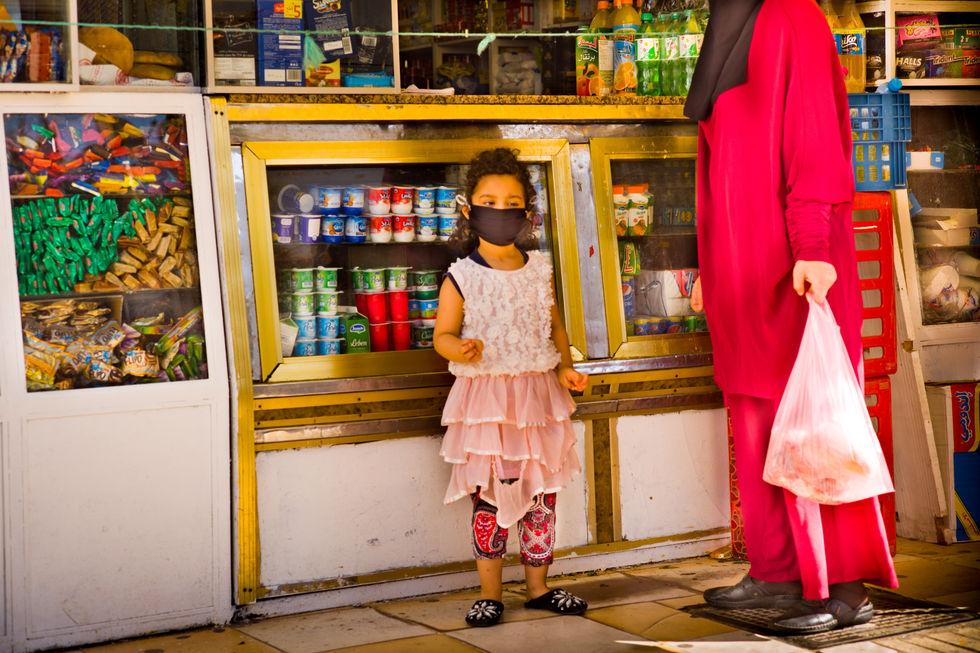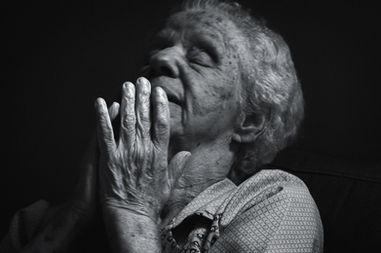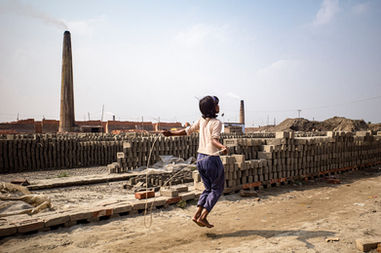
CASABLANCA NOW
November 20, 2020
PICTORIAL STORY
Photography and story by Melita Maria Vangelatou
Introduction by Karin Svadlenak Gomez
Melita Vangelatou has loved photography since childhood; in school she was the class photographer. Born and raised in Alexandria in Greece, she has lived and travelled in several different countries. She studied psychology and later photography. Her photographic work has been exhibited in her home country Greece and in Morocco, and she has published her work in several books.
Her latest book, Casablanca, was published for the exhibition of the same name at the Benaki Museum of Islamic Art in Athens. In Casablanca, Melita belongs to the association Casamemoire, which was created to safeguard Casablanca’s heritage. In a photographic project to document the city's architecture with UNESCO World Heritage Site status, Melita tried to include pictures of people in the architectural photos as much as possible, gaining praise from the UNESCO committee for it.
For The Pictorial List, Melita shared her story about Casablanca's people and their customs during the COVID-19 pandemic. We call her story Casablanca Now, because, although the customs she describes are timeless, the photos with people wearing masks contextualise Melita's story into the present year.
-min.jpg)
I feel privileged and enriched by the experience of living in different countries even though there is always an emotional price to pay. We now live in Morocco, which is the country I have lived longer in and feel a close affinity to. Casablanca, where I live, is a modern, cosmopolitan city. It is Morocco’s largest city and its second biggest port. It has wide avenues and high-rise buildings.
Casablanca's growth from a village to an international metropolis in the beginning of the twentieth century could not have happened without the influx of villagers who came to work as labourers and builders. These people conglomerated in shantytowns and working-class districts, where they lived in accordance with the same traditions they had in the villages they came from. I am interested in their way of life and try to capture their customs.
I find it very captivating to see Moroccans wear their traditional dress, ‘djellaba’ and shoes, ‘babouch’, something that has been lost in most Western countries. Even though the djellaba is worn on an everyday basis in the working class districts, any dress code is accepted. In one of my photographs a young girl wearing a djellaba is conversing with her bestie wearing a bikini.
In these areas people shop from outdoor bazaars, which are busy and noisy places with multiple smells and aromas emanating from the spices and finger food sold in abundance. The street sellers drag their wares in huge bundles or on carts to display them on the pavement. Apart from food, everything else is sold in these bazaars, clothes, toys and kitchen wares.
Mothers have their children with them all the time. They have nowhere to leave the children, babysitters are non-existent, and the grandmothers stay behind in the villages where the family came from. The children know they have no alternative, so they are very obedient and well behaved around their parents.
There are two flamboyant personages that are an integral part of these areas, the water seller, ‘Guerrab’, and the performers, ‘Gnawa’. In big crowds the suppliers of water, Guerrab, stand out because of their traditional bright red clothing and Berber wide brimmed hat with colourful pom poms. They have shallow brass cups strapped to their chest and a goatskin water bag dangling from their waist. They tend their cup to passersby inducing them to buy water. During the Pandemic nobody dares buy water to drink from communal cups. The Guerrab now still tend their cups, empty this time, supplicating for some coins from passersby. Everyone responds willingly to their begging, as they understand their plight.
The Gnawa wear hats covered with cowrie shells ending in a long tassel, that they sway back and forth as they dance to the rhythm of their ‘krakebs’ (a kind of castanet). The Berbers brought the Gnawa as slaves from Sub-Saharan Africa. Slavery was abolished in 1923, and the Gnawa were converted to Islam, but they still continue their spiritual dances of possession and are practising healing rituals mixed with animistic rites. During the Covid-19 pandemic there are no festivities where the Gnawa can perform, so they play their castanets in the streets just to beg for donations. Their deeply hypnotic trance music has won international appeal and has influenced many Western musicians.
The ‘Casaoui’, which are the inhabitants of Casablanca are very proud of the Atlantic, which they consider “their” ocean. They find a spot with a view and spend hours just looking at the sea. The spot they prefer is near the island of the saint Sidi Abderrahman. According to Moroccan popular belief, Sidi Abderrahman heals possessed individuals and helps women bear offspring and find a husband. The sanctuary, with its green pyramidal roof is the largest building on the island off the coast of Ain Diab and is surrounded by whitewashed houses inhabited by fortune-tellers. The whole place was closed during lockdown and now people are slowly starting to visit it again even if only to pay their respects to the saint.
Moroccans value their private lives, which they protect from outsiders. Their traditional houses have no balconies or windows towards the street, and the only light and air they get is from their internal courtyards onto which all rooms open. On the beach they cover their umbrellas with sheets and towels to keep indiscreet eyes away. Camels are brought from the desert, where they are used for transport, to offer fun rides on the beach. As there are low and high tides and currents, very few people swim. Instead, they enjoy activities in the sand, like these camel and donkey rides.
Children enjoy snacks and favours on the beach so there are many ambulant sellers both on the sand and on the Corniche, which is the promenade that runs along the coast of Casablanca.
Traditional Moroccan women do not swim at all. They go to the beach dressed in their djellaba wearing a headscarf and often a baseball hat on top to keep the sun away. They go as far in as the wet sand to refresh themselves and watch over their children. Some choose to spend the day under their umbrellas chatting or sipping mint tea, Morocco’s traditional drink, with friends and family.
In the areas where I photographed, the houses are small, so life takes place on the streets. With the pandemic, when the beaches opened, everyone swarmed there. Whole families, but mostly women and children, spend their days on the beach. Since the pandemic, this was where all the activity took place, so it was my preferred area too and I took most of my photos in this series on the beach.

My project Casablanca is an ongoing project and will only end when I leave the city for good. There is always something to learn and something new to photograph, there is a lot of information to gather and there are many photos to take.

The views, thoughts, and opinions expressed in the text belong solely to the author/s, and are not necessarily shared by The Pictorial List and the team.






































